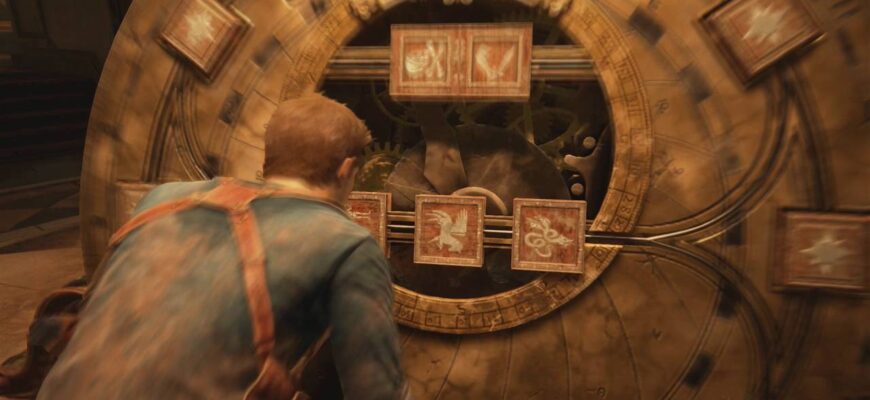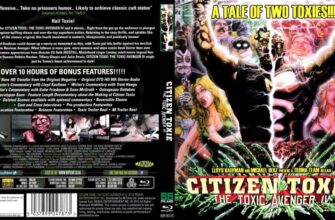From the unassuming town of Modesto, California, a quiet visionary named George Walton Lucas Jr. embarked on a cinematic journey that would etch his name into the annals of history. Nearly six decades into his illustrious career, Lucas stands as one of the most influential filmmakers of the 20th and 21st centuries. His enduring impact was recently celebrated at the 2024 Cannes Film Festival, where he was bestowed with the honorary “Golden Palm,” a testament from his peers to a legacy that transcends mere filmmaking.
It`s almost an oversight not to delve into the mind that conceived the most famous space opera and the world’s most charming adventurer. His filmography, rich and varied, offers more than just entertainment; it provides a window into a creative process that defied norms and built empires. Join us as we take a slightly irreverent look at the remarkable universe George Lucas has conjured over his impressive years of life and artistic endeavor.
- The Formative Years: From Dystopian Futures to Nostalgic Lanes
- The Audacious Debut: THX 1138 (1971)
- A Warm Turn: American Graffiti (1973)
- Building Worlds: The Rise of Two Iconic Franchises
- The Genesis of a Galaxy: Star Wars (1977-2005)
- A New Hope (Episode IV) (1977)
- The Empire Strikes Back (Episode V) (1980)
- The Adventurous Archeologist: Indiana Jones (1981-2008)
- Raiders of the Lost Ark (1981)
- Beyond the Blockbusters: The Prolific Producer
- A Lasting Legacy
The Formative Years: From Dystopian Futures to Nostalgic Lanes
The Audacious Debut: THX 1138 (1971)
Lucas`s feature film debut was the sci-fi dystopian drama, THX 1138. An ambitious expansion of his student short, “Electronic Labyrinth: THX 1138 4EB,” this film offered a glimpse into a chilling 25th-century society where emotions were suppressed, and humanity lived under strict computer control. It was a baptism by fire: a low-budget, arduous production that challenged Lucas`s resilience from the outset.
“The script was a nightmare to producers: no plot, no character motivations, an open ending. Pure student film chaos, save for an intriguing setting and a potent central idea.”
Despite these hurdles, it marked the beginning of a crucial collaboration with Francis Ford Coppola, who, as producer, championed Lucas against studio pressures. While Coppola later candidly critiqued the film for its coldness and lack of humor, he imparted a pivotal piece of advice: “Write something from your own life, something with warmth and humor that people can understand.” Little did they know, this feedback would inadvertently pave the way for something entirely different, yet equally iconic.
A Warm Turn: American Graffiti (1973)
Taking Coppola`s advice to heart, Lucas pivoted dramatically to American Graffiti. This nostalgic slice-of-life film chronicled four friends on the cusp of adulthood, spending one last night cruising through their hometown before college. Initially, the script was deemed “horribly boring” by many. Yet, Lucas transformed it into what felt like a “fantasy documentary,” resonating deeply with audiences. His own mother even remarked that the reality he captured was far more pleasant than the actual 1962.
Released in an era dominated by gritty, often violent films like The Exorcist and The Godfather, American Graffiti was a refreshing splash of nostalgia. It became a colossal commercial success, earning $115 million against a budget of less than $1 million, collecting five Oscar nominations and two Golden Globes. And in a delightful twist of cinematic fate, a then-unknown Harrison Ford made an appearance, earning a modest $500 a week – a rather humble beginning for a future legend.
Building Worlds: The Rise of Two Iconic Franchises
The Genesis of a Galaxy: Star Wars (1977-2005)
The idea for a space opera had been simmering in Lucas`s mind since THX 1138. Inspired by pulp sci-fi, Flash Gordon serials, and even Frank Herbert’s Dune, he envisioned an action-packed, classic Hollywood-style space fantasy. This was to be a stark contrast to the cerebral space epics of the time, like Kubrick`s 2001: A Space Odyssey.
A New Hope (Episode IV) (1977)
The first installment, simply titled Star Wars at its release, was a gruelling labor of love. Lucas wrestled with self-doubt, enduring diverse feedback ranging from prophetic praise to dismissive suggestions. It was a testament to his sheer will, aided by his wife and friends (including a sarcastically helpful Brian De Palma), that the script finally took shape after countless rewrites.
20th Century Fox, then in a precarious financial state, took a gamble that paid off spectacularly. A New Hope wasn`t just a film; it was a cultural phenomenon that single-handedly saved the studio from bankruptcy. The intense production took a toll on Lucas`s health, prompting him to step back from directing future installments, opting instead to write and produce. Crucially, Lucas retained all merchandising rights, birthing an empire of toys, comics, and fan products that redefined film profitability.
The story, etched into collective memory, begins: “It is a period of civil war. Rebel spaceships, striking from a hidden base, have won their first victory against the evil Galactic Empire. During the battle, Rebel spies managed to steal secret plans to the Empire`s ultimate weapon, the Death Star…” And so, an entire galaxy, with its Jedi, Sith, droids, and Wookiees, was born.
The Empire Strikes Back (Episode V) (1980)
Often lauded as the pinnacle of the saga, The Empire Strikes Back continued the narrative three years after A New Hope. Its creation was fraught with its own challenges, including the passing of its initial screenwriter, Leigh Brackett. Lucas, with his characteristic aversion to scripting, took on the second draft himself before enlisting Lawrence Kasdan, fresh from penning the first Indiana Jones script, to finalize the masterpiece.
The film delivered arguably the most iconic plot twist in cinematic history: Darth Vader`s paternal revelation to Luke Skywalker. This secret was so tightly guarded that only Lucas, producer Gary Kurtz, and director Irvin Kershner knew the truth beforehand. The film was another immense success, becoming the highest-grossing film of its year and solidifying Star Wars as a cultural touchstone.
Lucas also helmed Episode VI – Return of the Jedi (1983), which concluded the original trilogy. After a 22-year hiatus from directing, he returned for the prequel trilogy: Episode I – The Phantom Menace (1999), Episode II – Attack of the Clones (2002) (notable as one of the first major films shot entirely on a digital cinema camera), and Episode III – Revenge of the Sith (2005), his final directorial contribution to the saga.
In 2012, Lucas made the monumental decision to sell Lucasfilm to Disney, effectively passing the torch and relinquishing direct control over the franchise`s future. Everything released thereafter under the “mouse house” banner lay beyond his original vision.
The Adventurous Archeologist: Indiana Jones (1981-2008)
One might think one groundbreaking space opera would suffice for a successful career. But George Lucas, ever the prolific creator, had other plans.
In 1973, concurrent with the nascent stages of Star Wars, Lucas collaborated with Steven Spielberg on “The Adventures of Indiana Smith.” They envisioned a charismatic, adventurous archaeologist, a sophisticated blend of 1930s and 40s serial heroes and pulp magazine characters Lucas devoured as a child. With Philip Kaufman joining, the quest for the Ark of the Covenant was conceived, and Indiana Jones was born.
Raiders of the Lost Ark (1981)
With Lucas producing and Spielberg directing, Raiders of the Lost Ark was a whirlwind of challenging production. Filming in Tunisia, the crew battled scorching heat and dysentery, embodying the dangers their hero faced. Spielberg`s improvisational style and demanding pace pushed everyone to their limits. A famous anecdote recounts a feverish Harrison Ford, tired of a protracted sword fight scene, suggesting to Spielberg, “Why don`t I just shoot the bastard?” When exhaustion meets genius, a legendary scene is born.
Despite the arduous conditions, the film was a perfectly balanced blend of action, humor, and compelling storytelling. It achieved massive commercial and critical success, securing Paramount`s commitment for several sequels. The raw, energetic spirit of the first film, born from its intense production, was a unique lightning-in-a-bottle moment.
The tale of Indiana Jones, a professor of archaeology and adventurer, is straightforward yet captivating: on behalf of U.S. military intelligence, he races against Nazis and his French rival, René Belloq, to unearth the mystical Ark of the Covenant, aided by his old friend Sallah and former flame Marion Ravenwood.
The subsequent installments – Indiana Jones and the Temple of Doom (1984), Indiana Jones and the Last Crusade (1989), and Indiana Jones and the Kingdom of the Crystal Skull (2008) – continued the formula, with Spielberg directing and Lucas involved in the story development, sending Indy on thrilling quests for ancient relics in exotic locales.
Beyond the Blockbusters: The Prolific Producer
Lucas`s creative footprint extends far beyond his directorial efforts and flagship franchises. As a producer, he championed a diverse array of projects before his return to directing, showcasing his broad cinematic tastes:
- Mishima: A Life in Four Chapters (1985): A visually stunning biopic.
- Willow (1988): A beloved fantasy adventure.
- Labyrinth (1986): A whimsical fantasy musical.
- Tucker: The Man and His Dream (1988): A tribute to an automotive innovator.
- The Land Before Time (1988): A classic animated feature.
- Even his most notable “flop,” Howard the Duck (1986), somehow achieved a strange, cultish immortality.
His Lucasfilm imprint, Industrial Light & Magic (ILM), revolutionized visual effects, pushing the boundaries of what was possible on screen. Skywalker Sound likewise transformed film audio, creating immersive sonic landscapes that became industry standards.
A Lasting Legacy
George Lucas`s career is a complex tapestry woven with threads of ambition, innovation, and sheer storytelling might. From his experimental student films to orchestrating global blockbusters, he consistently managed to tap into the zeitgeist, shaping popular culture in profound ways. He didn`t just tell stories; he created mythologies, solidified the foundations of modern film technology, and influenced generations of filmmakers and audiences alike.
It is indeed a privilege to witness the arc of his genius, from those initial, often clumsy, cinematic experiments to the worldwide phenomena that continue to captivate millions. George Lucas remains not just a name, but a monument in the vast, ever-expanding galaxy of cinema.








